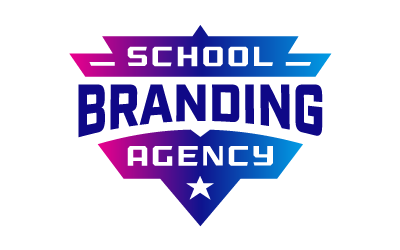Client: Hoover School of Fine Arts
Location: Whittier, California
Project: Arts-Focused Brand Identity

Hoover School of Fine Arts has distinguished itself within the Whittier City School District through its specialized curriculum integrating comprehensive arts education with academic excellence. As one of the district’s focus schools, Hoover provides elementary students with enhanced exposure to visual arts, music, dance, and drama while maintaining rigorous academic standards.
Despite their distinctive educational approach, Hoover’s visual identity failed to communicate their arts emphasis or create meaningful differentiation within the district. The school approached our agency to develop a brand identity that would authentically represent their arts integration while building recognition and pride among students, families, and the arts community.
In partnership with school leadership and arts faculty, we established several key objectives:
- Create a distinctive identity system that visually communicates arts integration
- Develop a visual language that respects both fine arts traditions and elementary education
- Design applications that support various arts disciplines while maintaining unified presence
- Establish immediate differentiation within the Whittier City School District
- Build a system that resonates with arts-interested families and community partners
Strategic Approach
Our research phase revealed important insights about effective arts-focused school branding:
- Successful arts education identities balance:
- Creative expression with academic structure
- Artistic sophistication with elementary accessibility
- Traditional arts references with contemporary relevance
- Distinctive character with educational credibility
- Visual systems for arts-integrated schools are most effective when they:
- Reference multiple arts disciplines rather than favoring one
- Create flexible frameworks that support diverse artistic styles
- Maintain consistent structure while allowing creative application
- Function effectively across both arts contexts and general education
- Color and form play especially crucial roles in arts-focused identities, with heightened expectations for visual sophistication and intentional design choices.
- Effective arts education brands create visual connections to both creative self-expression and disciplined craft/technique—the dual foundations of quality arts education.
These insights guided our development of an identity system that authentically represents Hoover’s arts-integrated educational approach while functioning effectively within an elementary school context.
Design Development
Core Identity Elements
The Hoover School of Fine Arts identity features several strategic components:
- Multidisciplinary Symbolism: Visual elements reference diverse arts disciplines through abstracted representations of key tools and concepts from visual arts, music, dance, and drama.
- Dynamic Composition: The design employs principles of movement, rhythm, and balance—foundational concepts across arts disciplines that connect to Hoover’s integrated curriculum.
- Color Harmony: A sophisticated palette balances vibrant primaries with complementary accents, creating visual interest while demonstrating color theory principles taught within the curriculum.
- Typography Integration: Letterforms balance artistic character with clarity, acknowledging both creative expression and communication fundamentals.
- Structured Creativity: The overall system provides clear framework and guidelines while allowing for creative application—mirroring Hoover’s educational approach of teaching foundational skills that enable creative expression.
Arts-Specific Applications
The identity extends to support various contexts within Hoover’s specialized curriculum:
Visual Arts Program
- Gallery exhibition materials
- Student portfolio systems
- Arts supply identification
- Visual arts events and communications
Performing Arts Applications
- Performance programs and promotions
- Music and dance program materials
- Drama production identity systems
- Recital and showcase communications
Integrated Classroom Applications
- Arts-integrated lesson materials
- Creative project identification
- Student recognition systems
- Classroom environment graphics
Design Considerations
Several key factors influenced our design decisions:
Elementary Appropriateness
While sophisticated in concept, all elements maintain accessibility and engagement for elementary-aged students, with applications adjusted for developmental differences between early and upper elementary.
Arts Education Specificity
The system avoids generic “arts and crafts” visuals in favor of authentic references to formal arts disciplines, reflecting Hoover’s commitment to substantive arts education.
District Integration
The identity establishes Hoover’s distinctive focus while maintaining appropriate connection to the Whittier City School District, acknowledging its role within the broader educational community.
Community Partnerships
Design elements support connection to local arts organizations and potential partners, facilitating Hoover’s engagement with the broader arts community.
The resulting identity system provides Hoover School of Fine Arts with a distinctive visual presence that authentically communicates their arts-integrated educational approach while engaging elementary students with age-appropriate sophistication and creativity.
Read our Ultimate School Branding Guide.
Everything you need to know to create a kick-ass school brand that creates results.
